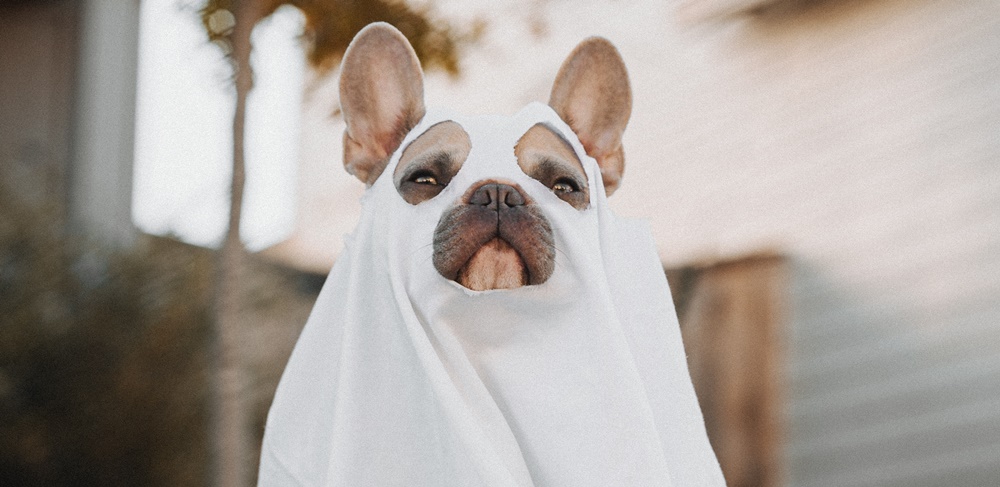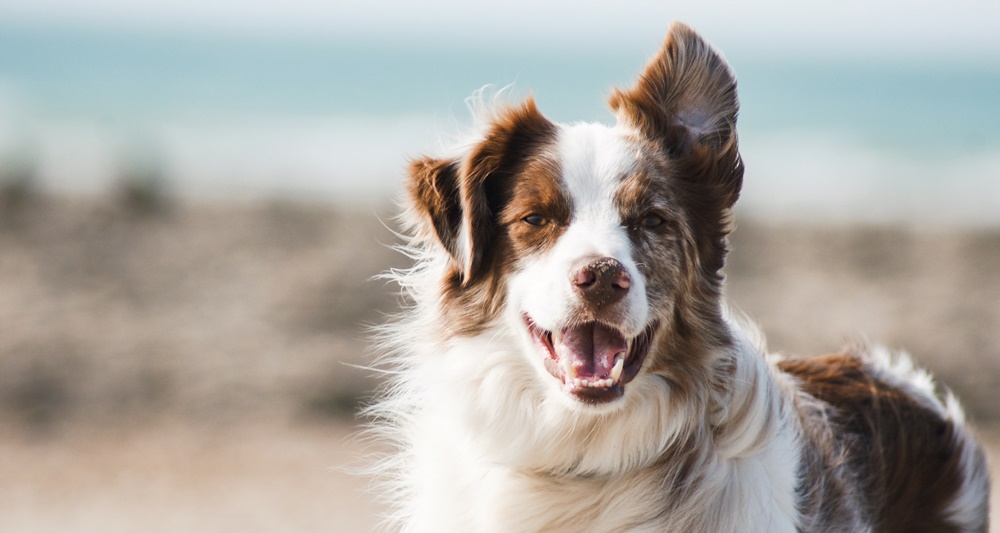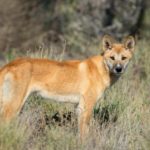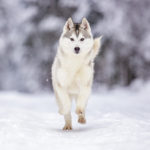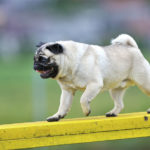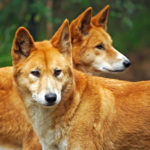Dog Facts: Interesting and Fun Facts about Dogs
In this article, we will check interesting and fun facts about dogs. Who loves dogs he will like these interesting facts as well.
- It is said that Greyhounds are the fastest dog. With speeds of up to 45 miles per hour (for short distances), I’m not going to question the results.
- Most dogs’ eyes reflect color in the dark. The most common color is green, although some eyes reflect orange or red. Interesting, and such.
- It has long been thought that one dog year was the equivalent of seven human years. In other words, dog’s age seven times faster than we do. It has since been found that when a dog reaches one year old, he is the equivalent of 16 in human years. By the time the dog reaches three years old, the human equivalent is only 28. Figure that out. Results vary by breed.
- Another fact about Dog: Dogs have a keen sense of smell, using their noses about a million times more efficiently than we use ours. This means that Rover will smell each individual ingredient in a meal while we might only smell the meal itself.
- Technically, all dogs are descendants of wolves. Excellent, so all dogs are some sort of wolf-dog. That may explain the temperament of some.
- Dogs can only produce about ten vocal sounds. That’s almost as bad as your CD player stuck in monotone. No wonder the dogs never have much to say. We won’t get into the many levels that cats can whine on.
- Dogs and cats eat about $7 billion worth of pet food each year. And guess who gets to pay for it? I think the animals have it down on how to live a good life.
- Here is another interesting fact about dogs – Dalmatians don’t have spots when they are born. They are simply white. As they grow up, as if something was forgotten, the spots appear. Like one of those magical color-changing dogs.
- It seems there was a problem with dog droppings in New York City. In 1978, a law was passed requiring dog owners to clean up after their pets. Before then, approximately 40 million pounds of doggie doo-doo hit the streets of New York each year. Now we know where that $7 billion worth of pet food went.
- Inbreeding causes problems for Dalmatians. It causes 30% of the dogs to suffer a hearing problem. I think we all know the moral of this story.
- The sound dogs make is referred to as bark, growl, woof, whimper, snarl, yelp, and howl.
- When a dog bays at the moon it is its natural instinct surfacing to call a pack together and it’s a fact.
- Dogs have been domesticated for 14,000 years, but evidence shows dogs have been around for as long as 150,000 years.
Heights range from a few inches, such as the smallest breed Chihuahua to three feet, such as the largest breed the Irish Wolf Hound, and the tallest breed, the Great Dane
Interesting facts about famous dogs
Boomer – A hound of mixed parentage, was said to be able to outrun the trains that sped along their tracks near Makanda, Illinois. A monument to this faithful mutt, who died Sept.2, 1859, stands there today. Boomer’s master was a railway fireman. His dog was killed by running into a railroad bridge, while racing along on three legs beside the train, trying to put out a fire in the hotbox. Which begs two questions: how did they know what the dog was intending, and just what was he going to put the fire out with?
Boss – Beloved pet of riverboat captain William A. Ellerbrock, he died in 1880, trying to rescue his master who was fighting a fire at the waterfront. They were buried in the same casket, and Boss is carved on Ellerbrock’s tombstone.
Owney – adopted as a stray by the staff of the Albany, NY post office. For ten years, he followed them on their rounds, logging some 140,000 miles before his life was ended in 1897 by a gunshot from sources unknown. His friends had him stuffed, and he sits today in the National Post Museum, Washington, D.C. Waiting for the next delivery.
Balto – known as the “wonder dog” in real life, and as the butt of many jokes by late-night talk show host, Johnny Carson. In 1925, during a Diptheria epidemic in Nome, Alaska, a sled dog driver was engaged with extra dogs to rush vaccines to the stricken city. Balto was the lead dog when the sled arrived, but it was actually a Husky named Togo, who had led the team over the roughest portion of the journey. The dogs became celebrities for a few years, then the public lost interest and they were sold to a vaudeville show. The children and citizens of Cleveland, Ohio chipped in to rescue the remaining dogs, who were discovered by a local businessman while visiting California. Balto was stuffed on his death and is on display today at the Cleveland Museum of Natural History. Togo somehow made his way “home”, and his preserved remains can be viewed at an Iditarod gift shop in Wasilla, Alaska.
Caesar – The Fox Terrier who was the lifelong companion of King Edward VII of England, followed his coffin in the funeral procession. The King’s tomb, in St. George’s chapel, is topped by the traditional sculpted figure of the deceased, but instead of the heraldic lion of a king at his feet, Edward VII has the image of his dog.
Peritas – Described as a mastiff-type dog, was given to Alexander the Great as a puppy when he was eleven. Later in his life, she died during a voyage to India. Alexander led a formal funeral cortege to her grave, where a monument was erected, and a city named in her honor, which still stands today.
Saur – Pet of the King of Norway, he was elevated to the throne for three years in the 11th century A.D. when the citizens became fed up with the king, and he made them choose between his slave and the dog for a ruler. They chose the dog.
Pat – The Irish Terrier who was the boon companion of Canadian Prime Minister, McKenzie King in the 1940s. King, known for his addiction to spiritualism, once had Louis Pasteur prescribe treatment for the dog while it was ill. He got the prescription via his Ouija board.
Boatswain – The Newfoundland dog of poet Lord Byron, who despite a licentious reputation for incest, adultery, and many other things, nursed his beloved dog when it contracted rabies, and wrote one of his best-known pieces “Epitaph to a Dog” when he died. Byron then placed a monument on the dog’s grave that is bigger than his own.
Throughout history, dogs have had a reputation for leading men. Into battle, into the woods for the game, out of the woods to safety, and even into outer space.
Interesting facts about Russian Laika
Laika’s launch into stardom would be her one and only trip to the stars, where she would stay, forever. For Laika, which means “bark” in Russian, was just a street mutt, picked up in Moscow, and drafted into the Russian space race.
In an effort to beat the Americans, the Russians hustled Laika into a space capsule and catapulted her off into the stratosphere, Nov.3, 1957, on just the second satellite to orbit the Earth. Sputnik 2, the then unwieldy 250 lb. capsule, contained a tiny metal sphere in which Laika and two backups had been trained to tolerate, by placing them in increasingly smaller cages. They were also taught to eat a gel form of food.
Poor Laika was to be sacrificed to the glory of the Soviet Union, since there was no possibility that she could return alive, with the technology of the day. But for 45 years, the Russians lied about her fate, claiming that euthanasia drugs had been placed in her food and that she had died 4-5 days into the flight. This was what their monitors for temperature and the operation of their oxygen system told them. So they said.
Not until 2002, did the truth come out. The Russian’s monitoring equipment showed an elevation in Laika’s heart rate on launch, and a delayed return to normal when she achieved weightlessness. By the capsule’s fourth revolution of the Earth, there were no more life signs from the capsule. Laika had expired from stress, and heat that exceeded the cooling system’s capacity.
Laika would orbit the Earth 2,570 times, before burning up and scattering her ashes to the stars, on April 4, 1958.
Rin Tin Tin (1918-1932) – The All-American hero who saved fledgling Warner Bros. Studios from bankruptcy, was not American. The German Shepherd’s owner/trainer, Corporal Lee Duncan, found him in a bombed-out dog kennel at Lorraine, France, along with his mother and five littermates. Rin Tin Tin would be the only puppy to survive and eventually returned to America with Duncan. Intelligent, and well-trained, they began looking for a way to capitalize on the canine’s talents. Eventually, Duncan stumbled onto a crew trying to shoot a movie with an uncooperative wolf. The rest, as they say, is history.
Lassie (1940-1958) – Lassie was a lot of things, including one of the most popular canine stars of all time. But he was not a she. He was a male named Pal, who belonged to animal trainer Rudd Weatherwax. In rough collies, it’s the males who have the fuller coats, and being larger, are considered best suited to the stunts that the character of Lassie would be required to do. But her/his first gig was simply as a stand-in for the original dog hired to film 1943’s “Lassie Come Home”. The bit went so well, Pal got the rest of the role and a place in history.
Facts about Dogs and History
Many dogs have become celebrities in their lifetimes, either through movies, television, or other modern media. But one dog has shone brightly for countless thousands of years before any sloppy Shepherd got his face on the telly.
The brightest star in the night sky, since man first learned to look up, has been Sirius, the Dog Star, a part of the constellation Canis Major, or Greater Dog. Canis Major was recorded as far back as Ptolemy’s time when he listed it among 48 known constellations, where it now resides on a modern list of 88. The constellation as a whole was said to represent one of the dogs who followed Orion into the sky.
Many cultures, dating back to the Ancient Egyptians, noted the presence of Sirius, but not all associated it with dogs. How that association came to be found in so many countries when travel between them was not yet possible, is one of the great mysteries of life.
Remote civilizations in China identified Sirius as the wolf, while no less than three countries: Iraq, Assyria, and Akkadia, referred to it as some form of “Dog of the Sun”. Greek mythology is responsible for most stories and variations, all of them having to do with the hunting, killing, or protective prowess of dogs. The entire constellation of Canis Major is supposedly in pursuit of the hare, or constellation of Lepus, which is located under Orion’s feet. In another version, it is the dog Laelaps, reputed to be able to catch anything it pursued. Until it met a fox able to outrun anything that chased it. Their endless ripping around the mountain home of the gods so annoyed Zeus, he turned them both to stone and placed the dog in heaven, where he wouldn’t get under anyone’s feet…except Orion’s.
There were two dogs that survived the sinking of the Titanic. One belonged to Henry Sleeper Harper and was a Pekingese and the other was owned by Miss Margaret Hays and was a Pomeranian.
A female dog by the name of Gidget is the real Taco Bell dog.
Dogs can actually see some color. Their vision is similar to what we see during the twilight hours.
Fast Facts About Puppies
- When puppies are born, they are deaf, blind, and have no teeth.
- During the first week of life, puppies spend 90 percent of the time sleeping and 10 percent of the time eating.
- A puppy will sleep 14 hours every day. They grow while they sleep.
- Puppies develop their sense of smell, hearing, and sight by the age of three weeks.
- Puppies wean between three and seven weeks of age.
- A puppy is considered an adult at the age of one year when they are the approximate maturity of a 15-year-old human.
- The name for a group of puppies is called a pack.
- A male dog is called a sire or stud, a female dog is called a bitch.
- Dogs’ offspring are referred to as pups or puppies. The average size of a litter is four to six puppies.

